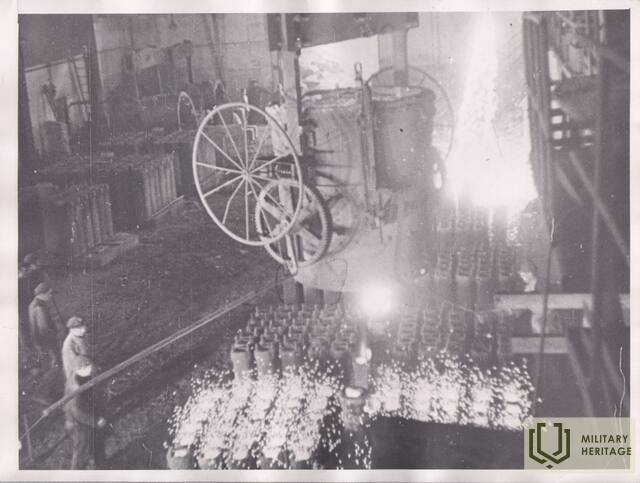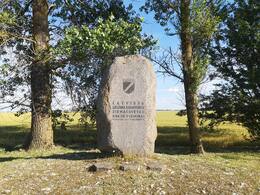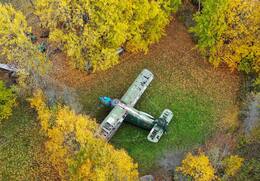Papasakokite man apie nuskendusią įrangą

Latvijoje išliko daugybė pasakojimų apie pelkėse ir ežeruose nuskendusius techniką. Nedaug jų yra teisingi.
Jame esančiame vaizdo įraše matyti, kaip entuziastų grupė 1944 m. gruodį Pienavos pelkėje netoli Dzūkstės, Latvijoje, atkasa legendinį sovietinį T-34 tanką. Sekdami istorijomis ir legendomis, jie rado du tankus, vieną iš jų galite pamatyti vaizdo įraše. Po kelių sunkių dienų tankas pagaliau buvo išrastas. Viduje buvo 43 patrankų sviediniai, kulkosvaidžio diskai ir rankinės granatos, bet įgulos palaikų neliko. Kas labiausiai stebina, po kelių savaičių valymo ir nedidelio remonto jie atgavo variklį, praleistą daugiau nei 50 metų pelkėje, kaip matote vaizdo įrašo pabaigoje. Kiek man pavyko sužinoti, tankas dabar eksponuojamas Karinės technikos muziejuje netoli Daugpilio, Latvijoje.
Tanko T 34 gelbėjimas iš Pienavos pelkės, Latvija - YouTube
Susijusi laiko juosta
Susijusios vietos
Paminklas Pienavos Kalėdų mūšių aukoms
Įsikūręs Tukumo rajone, A9 greitkelio pakraštyje, maždaug už kilometro nuo Pienavos Liepojos kryptimi.
Memorialas yra Trečiojo Kuršo mūšio, arba Kalėdų mūšio, vietoje, vykusio 1944 m. Antrojo pasaulinio karo pabaigoje Latvijos teritorijoje susidarė unikali situacija. Kurše buvo vokiečių armijos pajėgos, kurias Raudonoji armija bandė eliminuoti arba neleisti dalyvauti mūšiuose Rytų Prūsijoje ar aplink Berlyną. „Kuršo tvirtovė“ yra dažniausiai vartojamas terminas, vartojamas apibūdinti mūšius Kurše nuo 1944 iki 1945 m. „Kuršo mūšis“ buvo vokiečių armijos karinės operacijos, skirtos atremti didžiulius Raudonosios armijos išpuolius. Kuršo mūšiuose aktyviai dalyvavo ir Latvijos legionieriai.
Šiandien galite aplankyti memorialinę vietą. Atviri vietovės laukai be seniausių pastatų yra karo liudininkai.
Kuržemės įtvirtinimų gynėjų atminimo akmuo
Įsikūręs Tukumo rajone, A9 greitkelio pakraštyje, 500 m nuo posūkio į Lesteni Rygos kryptimi.
Memorialas buvo įkurtas 1991 m. netoli Rumbu namų, kurie buvo aktyvių karo veiksmų vieta. Tai duoklė „Kuršo tvirtovės“ gynėjams, kovojusiems su Raudonąja armija Antrajame pasauliniame kare. Mūšiai buvo reikšmingi, nes laikinai sustabdė Raudonosios armijos įvykdytą visišką Latvijos okupaciją. Maždaug 300 000 latvių emigravo, bėgdami nuo sovietų režimo įvykdytų nusikaltimų prieš civilius gyventojus.
Antrojo pasaulinio karo pabaigoje Latvijos teritorijoje susiklostė savotiška situacija. Kurše buvo dislokuotos Vokietijos armijos pajėgos, kurias Raudonoji armija bandė eliminuoti arba neleisti dalyvauti mūšiuose Rytų Prūsijoje ar aplink Berlyną. „Kuršo tvirtovė“ yra dažniausiai vartojamas terminas, apibūdinantis karo veiksmus Kurše nuo 1944 iki 1945 m. „Kuršo mūšis“ buvo Vokietijos armijos kova, siekiant atremti didžiulius Raudonosios armijos išpuolius. Kuršo tvirtovė nustojo egzistuoti netrukus po Vokietijos kapituliacijos.
Šiandien galite aplankyti memorialą ir poilsio vietą, kuri buvo populiari tarp Latvijos legionierių nuo pat Latvijos nepriklausomybės atkūrimo.
Karinės technikos muziejus Sventėje
Muziejus yra prie viešbučio „Sventes muiža“.
Jo ekspozicija išskiria tuo, kad dauguma eksponatų yra rasti buvusių mūšių laukuose. Sovietų armijos karinė technika yra meistriškai restauruota – kai kuriuos eksponatus galima užvesti ir pademonstruoti jų veikimą. Manoma, kad eksponuojami tankai yra reti egzemplioriai Europos mastu. Muziejuje galima pamatyti:
• sovietų armijos tankus – vidutinį tanką T-34 ir sunkiuosius tankus IS-2 ir IS-2M, pavadintus Stalino garbei;
• šarvuotas desanto žvalgybos transporto priemones BRDM-2 ir BRDM-1;
• karines transporto priemones „Jeep Willys“ ir „GAZ - 67“;
• savaeiges transporto priemones;
• patrankas ir kitą karinę techniką.
Kuržemės tvirtovės muziejus Zante
Bus atidaryta nuo gegužės 1 d.
Hermanno Faulo atminimo vieta
Jis įsikūręs kaimo kelių sankryžoje, nukrypus nuo kelio, vedančio iš Pienavos į Džūkstę.
Paminklas H. Faului ir devyniems vokiečių bei latvių kareiviams, žuvusiems 1944 m. gruodžio 27 d. mūšyje (tikriausiai susprogdinus juos tiesiogiai pataikius patrankos sviediniui) ir nuo to laiko laikomi dingusiais be žinios, nes nerasta jokių jų palaikų, dokumentų ar kitų tapatybės įrodymų.
Pasiplaukiojimas laivu „Zezer“ Ciecerės ežere
Kelionės pramoginiu laivu „Zezer“ Ciecerės ežeru netoli Brocėnų metu galėsite klausytis audiogido ir kapitono pasakojimų apie Ciecerės ežerą ir Brocėnų miestą prie jo krantų, Antrojo pasaulinio karo įvykius prie Ciecerės ežero, apkasus abiejose ežero pusėse ir Ąžuolų salą, taip pat tankų maršrutą, vedantį palei apžvalgos bokštą ir tanką, kuris, kaip teigiama, yra nuskandintas ežere. Audiogidas pateikiamas latvių, lietuvių, anglų ir rusų kalbomis. Kelionė trunka 1 valandą 15 minučių.










